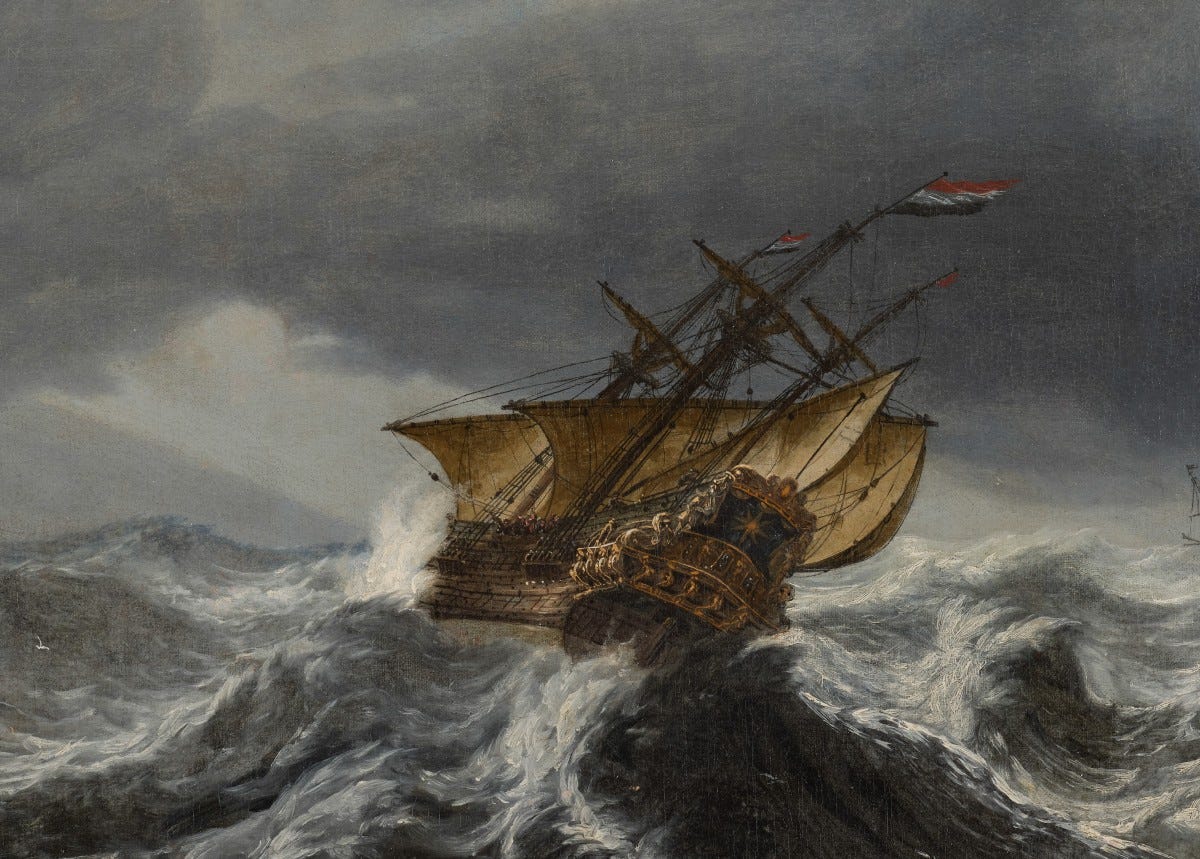It's never just 'smooth sailing' - and thank goodness for that!
From first meeting to proposals, to contract, research and a first draft that got everyone's enthusiastic thumps-up - all was going well. But the voyage was only just beginning.
In this Substack I’m recounting the journey of my film adaptation of The Coffee Trader - an epic undertaking that delivered a great script about a forbidden Jewish love story in 1650 Amsterdam in a world of double crosses, hidden agendas, murder, excommunication - and coffee, of course!
If you’re new to the journey, here are the posts about what’s happened so far. Now then, here’s what followed:
I had delivered the first draft in March 2006. I was happy with that huge script, and so were my collaborators - both the producer and my agent. So far, so good. Important to remember: Screenplays are most often long journeys and it’s entirely healthy to go into any such venture with that in mind. In addition, it’s just about never smooth sailing. These screenwriting voyages will veer off the charted course and turn into multi-year, tangled odysseys for any number of reasons. For that very reason, a good agent is invaluable. Luckily, I had (and continue to have) that good agent.
When you’re on your own as a writer, you’re in a weak position. A good agent gives you power, and they nudge and push and demand and and and - so that you don’t have to. As a writer, you don’t want to have to spend your time thinking about the small print in your contract - or the next payment - you want to stay, as much as possible, in the creative lane. Case in point, shortly after delivering the first draft, and after receiving the producer’s favorable feedback, my agent weighed in.
He shot off a crisp email with a list of items to be tackled - such as deadlines, such as gaps between drafts, such as fundraising. All of it was key. Unless you’re clear on deadlines, as a writer you may find yourself in a sort of limbo of gaps that make it impossible for you to do other work in between. My agent pointed it out so that a) the producer would be compelled to move forward at a good pace and that b) I would be able to work on other stuff during gap times. It’s all about managing and being clear about expectations.
And so, it began in earnest. We met again, we talked, we discussed storylines and characters, and off I went into the world of the second draft. I will always like first draft stage most, it is the purest solitary writer’s joy … everything after the first draft, the collaborative stage of every subsequent draft, is just a very different ballgame. Still, I had a good time, worked hard and delivered the second draft - thirty pages shorter - in late August of that year.
And then it was on to the third draft, then the fourth. As ever so often, at least in my experience, the third draft is often worse than the second one. That may perhaps sound odd to you, but it’s all part of the process as different interests and ideas clash and characters and plot evolve and new balances need to form. It was in between the second and the third draft that an additional producer came on board … which caused frictions that, in my view, had less to do with the story and more with egos. Alas, that, too, is part of the business of film.
What I’ve always enjoyed were ‘collaborative battles.’ I love fighting for my take on this or that - and I always enjoy it when someone convinces me that another take is better. This creative friction generates creative heat - and from that heat, that passion to make the best film possible, good things tend to come. It’s thus always healthy to go into those creative battles with humility. As writers we may think we know best, but collaborative battles are truly fruitful and often allow us to discover new and better things. As William Nicholson (he of Gladiator fame) said: “Great scripts are forged in battle.”
By the middle of 2007, the fourth draft was there and was met with glowing approval. While that was nice and lovely, what never came together was the financing. This story, set during the vibrant time of the Dutch Golden Age, a time when Amsterdam was a bustling haven of trade and nationalities, a city full of merchants and a port full of ships. All of that 1650 life we know so well from the many famed Golden Age painters, needed to come to life in this film.
Any period piece is costly with sets and costumes … and this film, for European film standards, was going to be exorbitantly expensive. What would have been need would have been an alliance with Hollywood - and confirmed A-list talent, of course. The production company tried and tried again, but just couldn’t make it happen.
The Coffee Trader had arrived in the awful place that, all too often, becomes the final station for film projects - the dreaded development hell … where it lingers to this day.
In the next post I’ll show the package used to find financing partners … it’s fun to see because it highlights locations and a number of A-list actors considered for the lead roles. Stay tuned!






